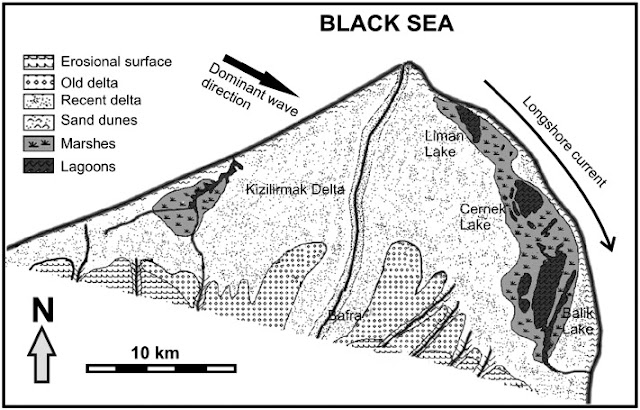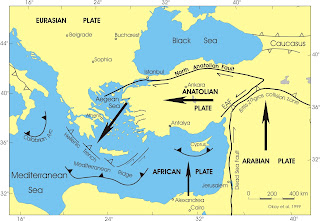Natural Disasters and Catastrophes in Turkey
Natural Disasters and Catastrophes in Turkey
Hi, my name is Linda Byrne and I have selected Turkey as my country to blog about for my Earth Catastrophes and Disasters (Geol 9) class at Monterey Peninsula College.Before I begin looking at Turkey's history of natural disasters, first, however, I want to briefly discuss the difference between hazards, disasters, and catastrophes.
It's important to study and understand earth's natural forces which occur both on the surface, and below the surface of our planet, and the impact those forces have on population centers and, ultimately, how those dangers can be mitigated in the future.
These natural forces themselves are not considered hazards, per se, from a scientific perspective, but are considered natural hazards when there is a threat to life and property.
A natural hazard is referred to as a disaster if any one of the following applies: 10 or more people are killed as a result; 100+ people are impacted; local, state or national government declares a "state of emergency" because local resources are overwhelmed; or international aid is called up.
According to Keller and DeVecchio, in Natural Hazards,"A disaster is a hazardous event that occurs over a limited time span within a defined area."
A catastrophe, on the other hand, is much more severe. It's impact is considered "massive," requiring significant resources (time, labor and dollars), often in the millions, or even billions of dollars, in order to restore order to population centers and to rebuild.
Recent examples of U.S. catastrophes are Hurricane Katrina (with costs, to date, exceeding $108B) and Superstorm Sandy (at an estimated cost of $69B). Recovery efforts for catastrophes can take years. In the case of both Katrina and Sandy, recovery efforts are still in progress. For some communities affected by Katrina, for example, rebuilding is still in progress more than a decade after the event.
This level of devastation, unfortunately, frequently happens even when the danger is known in advance. This is due, primarily, to population centers located in close proximity to historical disaster locations; unwise land use decisions; poor engineering design; and substandard building materials.
Next up: A discussion of the impact of natural disasters on Turkey.



Very nice and complete first post. Looking forward to your discussion this week about the tectonic setting of Turkey.
ReplyDeleteI appreciate the feedback; thanks!
Delete